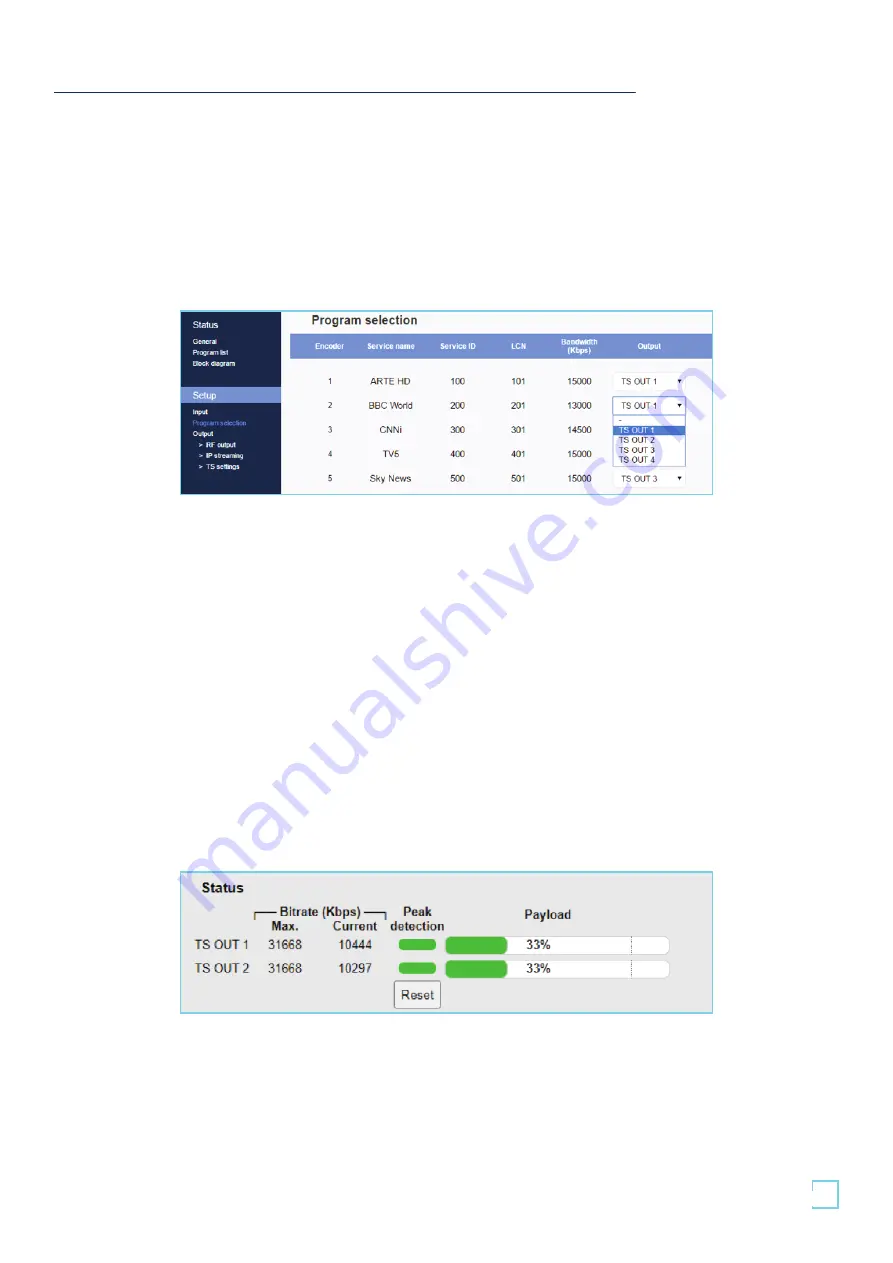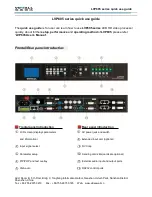
DTV -
Headend
| MLH-300
Manual
© 2020 Lemco. All rights reserved.
14
Using the Drop down menu from “Output” column (Figure No 6) the user is able to assign any program to any of
the two outputs. By doing the same process for each program, from all inputs the user is able to create the two (2)
custom multiplexes in device’s output.
Caution!
The number of programs that the MLH-300 can distribute on its output depends on the video bitrate that the user
selects for each program.
For example, if we select the following DVB-T setting for the two modulators on MLH-300 outputs:
• Constellation: 64 QAM
• Guard Interval: 1/32
• Code rate: 7/8
• Bandwidth: 8MHz
According to Appendix A we will have a total output bitrate of 31.67Mbps/ modulator. That means that we can
select as many programs but their total bitrate must not exceed the 31.67Mbps, otherwise artifacts may occur.
The status section in (Figure No 7) provides a general idea to the user of the current payload (according to the
selected programs) comparing to the max. output payload.
It is recommended that the user must not exceed the 85% from each output, since all the bitrate are variable
according to their specific content.
This page depicts all programs coming from the two (2) x HD inputs and their settings.
For each program the MLH-300 provides the following information:
•
Service Name – which is the name of the program
•
Service ID – which is the Service ID number of the program
•
LCN No – which is the logic channel number of the program
•
Bandwidth – which is the bitrate of the program
•
Figure No 6
•
Figure No 7















































